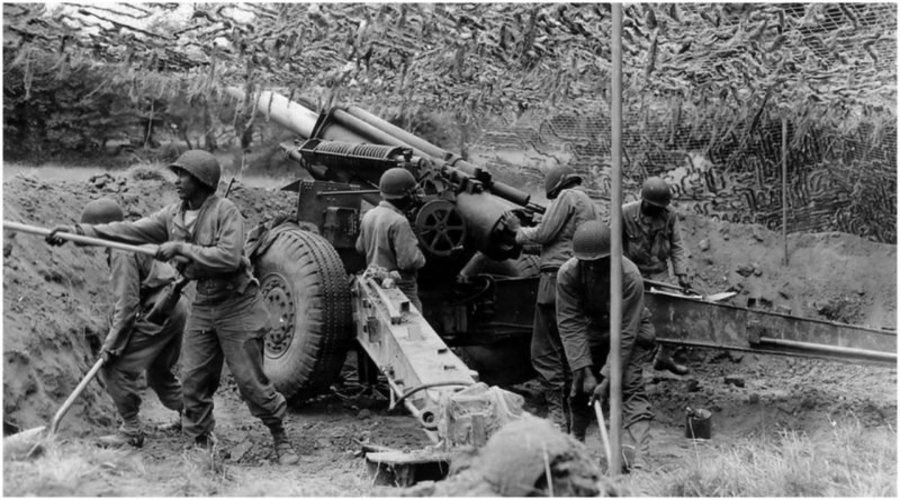
Today is Memorial Day, a day honoring the men and women who died while serving in the U.S. military. During World War II, eleven Black US soldiers were taken prisoner and killed after taking refuge in the Belgian village of Wereth.
Their names were: Curtis Adams, Mager Bradley, George Davis, Thomas J. Forte, Robert Green, James Leatherwood, Nathaniel Moss, George W. Moten, William Edward Pritchett, James, Aubrey Stewart, and Due W. Turner.
They are known as the Wereth 11.
This is their story.
The Wereth 11 were part of the 333rd Field Artillery Battalion, a racially segregated unit of Black soldiers during World War II.The battalion was formed in August 1917. The 333rd Field Artillery were sent to France to fight in World War I but did not see any action. The regiment was demobilized in 1919. In August 1942, the 333rd Field Artillery was activated as part of an army-wide artillery reorganization. The first battalion was the 333rd Field Artillery Battalion and the 2nd Battalion became the 969th Field Artillery Battalion. In June 1944, the unit arrived in Utah Beach, the westernmost of the five landing areas of the Normandy Invasion of World War II.

Photo from “Wereth 11” – 2011
It was during this Battle of the Bulge that most of the battalion were either captured or killed. Eleven Black soldiers who managed to reach the small 9-home town of Wereth, Belgium, were taken in for hiding by resident Mathias Langer. The soldiers were captured during a four-man German patrol of the 1st SS Division. These 11 Black US soldiers surrendered immediately. The SS troops made these soldiers sit in the cold all night, before marching them down the road where they were executed. It was December 17, 1944. The villagers, afraid of the Germans return, did not move the bodies, which meant they were entombed in snow until January when a platoon reached the site. Their bodies were found mutilated.
A “secret” classification investigation took place. As expected, there was no positive identification of the SS Division who murdered these fine men. By 1948 the “secret” classification was cancelled and the paperwork filed away. The murders of the Wereth 11 was seemingly forgotten and unavenged.”They would have remained in obscurity had their families and historians not fought for recognition. In May 2004, a memorial to the “Wereth 11” was formally dedicated. At the time, it was the only memorial to black American soldiers of World War II in Europe. The memorial is on the Langer property near the location where the massacre took place and where the bodies were found.

The Wereth 11 Memorial in Wereth, Belgium
In 2011, a movie was made about the Wereth 11.
In 2017, the U.S. Senate the passed a resolution recognizing the Wereth 11.
Today, and every day, we honor the life and legacies of these unsung heroes, who lost their lives fighting for a country that still won’t fight for them. We salute you!

Private Curtis Adams

Corporal Mager Bradley

Private First Class George Davis

Staff Sergeant Thomas J. Forte

Technical Corporal Robert Green

Private First Class James Leatherwood

Private Nathaniel Moss

Private First Class George W. Moten

Technical Sergeant William Edward Pritchett

Technical Sergeant James Aubrey Stewart

Private First Class Due W. Turner
